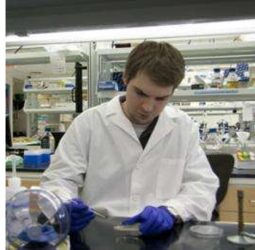
Healthcare professionals are becoming increasingly reluctant to prescribe antibiotics in light of the higher prevalence of drug-resistant bacteria. Every class of antibiotic that has been introduced since the invention of penicillin in the early 1900s has led to changes in micro-organism cell composition that are resistant to each drug.[1] Within just 10 years of the launch of each respective class of antibiotic, at least one species of bacteria became completely resistant to it.[2] Furthermore, as the utilization of these drugs has increased over time, so has the speed with which drug resistance has developed.[3] Bacterial resistance to antibiotics has become prevalent enough in society that the Food and Drug Administration, as well as a variety of similar government agencies around the world, have declared that it is a major public health threat.[4] According to the Centers for Disease Control, more than 2 million illnesses and 23,000 deaths in the United States have resulted from antibiotic resistance.[5]
Despite the fact that this topic is causing a considerable amount of concern in the pharmaceutical and healthcare industries, there are a variety of reasons that pharma is actually winning the fight against antibiotic resistant bacteria:
The Generating Antibiotic Incentives Now Act
In July of 2012, The United States Congress passed a law extending the patent duration of new antibiotics by five years and requiring the FDA to fast-track the approval process for these drugs.[6] Many large pharmaceutical companies have avoided placing emphasis on developing new antibiotics due to the difficulty of discovering effective new compounds and the costs associated with the R&D process. This law will help pharma companies recoup much more of the cost of developing novel antibiotics and create a stronger business opportunity for investors looking to support these initiatives.
Soil Bacteria Testing
Historically, researchers have struggled to study bacteria because a large quantity of bacterial strains cannot be grown in a laboratory environment. Although many antibiotic compounds are derived from fungi, plants, and other life forms, most of these compounds are found in bacteria.[7] Researchers at Northeastern University in Boston have developed a method of testing bacteria within soil. This technique utilizes a device known as the iChip, which allows researchers to identify natural compounds used by microbes to fight off other micro-organisms.[8] One compound found using this revolutionary technology is Teixobactin, which prevents some bacteria from building outer cell walls and thus prevents many strains from reproducing.[9] Interestingly, results indicate that it is likely to take bacteria much longer to develop a resistance to this drug, buying researchers valuable time to develop other antibiotics. Furthermore, the iChip presents an opportunity to find many other antimicrobial compounds that exist in nature.
Undiscovered Natural Antibiotics
According to the World Health Organization, scientists have cultured less than 1% of discovered bacteria in a laboratory setting. However, despite this fact, researchers have discovered an extensive list of antibacterial compounds. The potential for discovering new, and better antibiotics from the remaining 99% of bacteria is very promising. [10]
Improvements to Existing Antibiotics on the Market
Pharmaceutical manufacturers are increasingly employing defense mechanisms within their medications to prevent drug resistance. These mechanisms range from including molecules in medications that prevent enzymes that cause resistance from attacking a drug to adding decoy molecules to slow down the development of resistance. [11] One example of a drug that uses decoy molecules is augmentin, a combination of clavulanic acid and amoxicillin. The clavulanic acid is a decoy molecule that prevents bacteria from destroying the amoxicillin molecules.[12]
Industry Progress
In 2014, three antibiotics were given FDA approval for the treatment of MRSA infections.[13] MRSA is notably one of the most dangerous bacterial strains due to its developed resistance to multiple classes of antibiotics,[14] and it has caused a great deal of concern in the healthcare industry in recent years.
The pharmaceutical industry has a long way to go in countering antibiotic resistance, but it has made substantial progress in slowing and countering drug resistance. Despite media hype about an upcoming healthcare crisis involving ultra-resistant bacteria, the pharmaceutical industry is actually prevailing in developing new or modified drugs to counter this threat.
References
[1] About Antimicrobial Resistance. (2013, September 16). Retrieved May 29, 2015, from http://www.cdc.gov/drugresistance/about.html
[2] About Antimicrobial Resistance. (2013, September 16). Retrieved May 29, 2015, from http://www.cdc.gov/drugresistance/about.html
[3] About Antimicrobial Resistance. (2013, September 16). Retrieved May 29, 2015, from http://www.cdc.gov/drugresistance/about.html
[4] U.S. Food and Drug Administration. (2013, April 30). Retrieved May 29, 2015, from http://www.fda.gov/ForConsumers/ConsumerUpdates/ucm349953.htm
[5] About Antimicrobial Resistance. (2013, September 16). Retrieved May 29, 2015, from http://www.cdc.gov/drugresistance/about.html
[6] Krans, B. (2014, July 24). Few New Drugs: Why the Antibiotic Pipeline Is Running Dry. Retrieved May 29, 2015, from http://www.healthline.com/health/antibiotics/why-pipeline-running-dry
[7] Penicillin and other antibiotics. (2003, August 1). Retrieved June 10, 2015, from http://archive.bio.ed.ac.uk/jdeacon/microbes/penicill.htm
[8] Knapton, S. (2015, January 7). First new antibiotic in 30 years discovered in major breakthrough. Retrieved May 29, 2015, from http://www.telegraph.co.uk/news/science/science-news/11331174/First-new-antibiotic-in-30-years-discovered-in-major-breakthrough.html
[9] Yong, E. (2015, January 7). A New Antibiotic That Resists Resistance. Retrieved May 29, 2015, from http://phenomena.nationalgeographic.com/2015/01/07/antibiotic-resistance-teixobactin/
[10] Braine, T. (2011, February 1). Race against time to develop new antibiotics. Retrieved May 29, 2015, from http://www.who.int/bulletin/volumes/89/2/11-030211/en/
[11] General Background: What can be done about Antibiotic Resistance? (2014, August 1). Retrieved May 29, 2015, from http://www.tufts.edu/med/apua/about_issue/what_can_be_done.shtml
[12] Amoxicillin and Clavulanic Acid: MedlinePlus Drug Information. (2015, May 19). Retrieved June 10, 2015, from http://www.nlm.nih.gov/medlineplus/druginfo/meds/a685024.html
[13] Woodcock, J. (2014, September 23). FDA Voice. Retrieved May 29, 2015, from http://blogs.fda.gov/fdavoice/index.php/2014/09/three-encouraging-steps-towards-new-antibiotics/
[14] Why is MRSA dangerous? (2014, June 13). Retrieved May 29, 2015, from http://www.hain-lifescience.de/en/products/microbiology/mrsa/why-is-mrsa-dangerous.html





